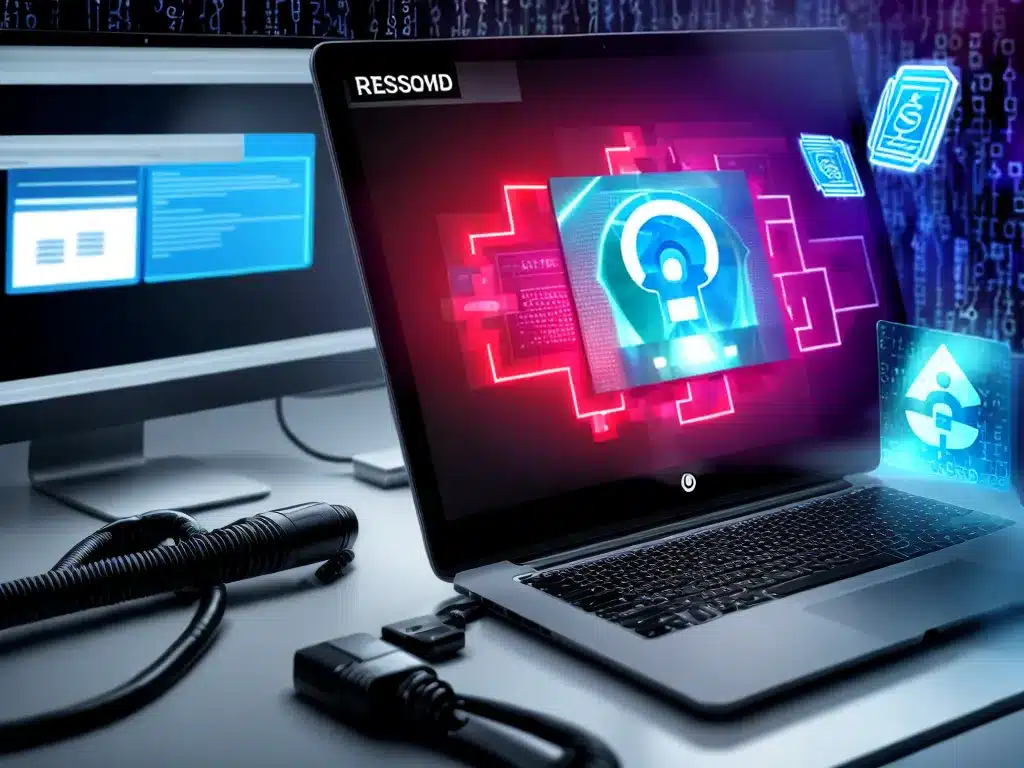
Introduction
Ransomware attacks have become increasingly common in recent years. These malicious programs encrypt files on a computer or network and demand a ransom payment in order to decrypt them. When a ransomware attack happens, it can be devastating to lose access to important data. However, with the right approach, it is often possible to recover encrypted files without paying the ransom. In this comprehensive guide, I will provide key information and strategies for recovering lost data after a ransomware attack in 2024.
Prevention is Ideal But Recovery is Possible
The best defense against ransomware is prevention through cybersecurity best practices. But even with robust prevention methods in place, ransomware attacks still occur. When you become a victim, stay calm and know that recovery is possible. The techniques for recovering encrypted data are continually improving. With persistence and the right tools, you can regain access to your files.
Disconnect Infected Devices Immediately
At the first sign of a ransomware attack, disconnect all infected devices from any network. This prevents the ransomware from spreading and encrypting more files. Isolating infected devices also protects backup files from encryption.
When evaluating infected devices, do not simply power down – follow proper procedures to avoid further issues. Consult with IT professionals if needed.
Determine the Type of Ransomware
Many ransomware variants exist, and the decryption methods can vary. Determine which specific ransomware strain infected your system using identification tools. This information will focus your recovery efforts on the appropriate methods for that ransomware type.
Popular ransomware families include:
- Ryuk
- Conti
- REvil
- LockBit
- CryLocker
Restore Files from Clean Backups
Backups are invaluable for recovery from ransomware. Restore files and systems from unaffected backups made before the attack. Ensure backups are complete and free of infection to fully recover data.
Ideally, maintain air-gapped backups – physically disconnected from networks – and regularly test backup integrity. With reliable backups, you can restore your data without paying the ransom.
Leverage Ransomware Decryption Tools
Security researchers often crack ransomware strains and release free decryption tools. Check sites like NoMoreRansom.org to see if a decryptor exists for the specific ransomware variant. These tools can decrypt files by exploiting weaknesses in the ransomware’s encryption.
Decryptors are available for many ransomware families but not all. It’s worth checking decryption resources to see if an option exists for your situation.
Look for Weaknesses in the Encryption Keys
Some ransomware has flaws in its encryption key generation or storage. Security experts or law enforcement may identify and share these weaknesses, allowing recovery of keys to decrypt files.
Stay updated on discoveries of vulnerabilities in ransomware strains. This can provide decryption keys you can use to restore data without the ransom payment.
Negotiate with the Ransomware Operators
You can sometimes successfully negotiate with ransomware criminals. Many will agree to a lower ransom if paid promptly. Others might provide a decryption key after payment to prove they can restore files.
However, paying the ransom funds criminal operations and does not guarantee recovery. Only negotiate with attackers as an absolute last resort.
Use Data Recovery or Forensics Services
As a last option, specialized data recovery or forensics firms may be able to restore some data. They use techniques like analyzing file fragments left on disks to reconstruct files without keys.
These services are expensive, time-consuming, and not guaranteed. But when all else fails, they sometimes recover small amounts of data.
Maintain Vigilance in 2024 and Beyond
Ransomware is continually evolving, and new challenges will emerge in 2024 and beyond. But by using the latest recovery techniques and tools, updating backups, and staying vigilant, you can overcome ransomware attacks. Stay confident that you can recover encrypted files without rewarding criminals.
With patience, persistence, and the methods outlined here, you can recover from a ransomware incident and regain access to your vital data. Don’t despair – you can mitigate the damage and restore your systems.
Conclusion
Ransomware attacks are disruptive events, but lost data can usually be recovered with the right approach. Isolate infected devices, restore from clean backups, use decryptors, check for weaknesses, negotiate only as a last resort, and leverage data recovery services when needed. With this comprehensive ransomware response strategy, you can regain your encrypted data without paying the ransom.
Stay vigilant in your cybersecurity defenses but know that even if attacked, you can recover when armed with information and focused recovery techniques. By following this guide, you can effectively respond to ransomware incidents in 2024 and beyond.












